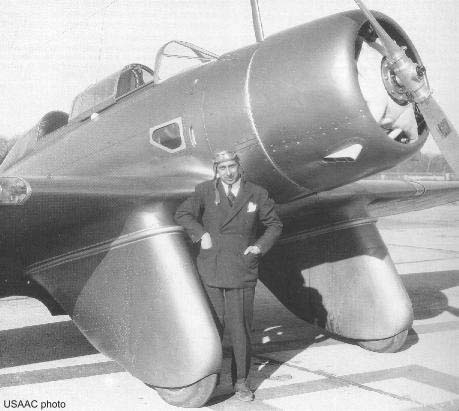Seversky SEV-3 on:
[Wikipedia]
[Google]
[Amazon]
The Seversky SEV-3 was an American three-seat amphibian monoplane, the first aircraft designed and built by the Seversky Aircraft Corporation.


"Fast American Amphibians"
'' Flight'', 16 November 1933 {{Wright Field project numbers 1930s United States civil utility aircraft Floatplanes SEV-3 Single-engined tractor aircraft Low-wing aircraft Amphibious aircraft Aircraft first flown in 1933
Design and development
The SEV-3 was an all-metal cantilever low-wing monoplane powered by a nose-mounted 420 hp (313 kW) Wright J-6 Whirlwind radial engine. It had two cockpits in tandem, a forward cockpit for the pilot and a rear cockpit for two passengers, both with sliding canopies. It could either be fitted with twin amphibious floats which had main wheels fitted in the floats to allow it to operate from land, or with a fixed tailwheel undercarriage with the mainwheels enclosed in large fairings.Green and Swanborough ''Air Enthusiast'' Ten, pp. 9–10. The SEV-3 first flew as a floatplane in June 1933, demonstrating excellent performance as both an amphibian and a landplane.Green and Swanborough ''Air Enthusiast'' Ten, p. 9. It was built in small numbers mainly for export.
Operational history
An SEV-3 established a world speed record for piston-engined amphibians in 1933, and on 15 September 1935, a Wright Cyclone-powered SEV-3 set a record of 230 mph (370.8 km/h) which stood for 49 years. A landplane version was also developed with conventional landing gear. The design influenced a long line of Seversky and later Republic aircraft, eventually leading to the development of the P-47 Thunderbolt. A landplane version was used by the United States Army Air Corps as a basic trainer with the designation BT-8, 30 of which were ordered in 1935. This proved grossly underpowered and was quickly replaced by the North American BT-9. One BT-8 was delivered to Bolling Field, on 11 June 1936, for use by Chief of the Air Corps Major General Oscar Westover, and assigned to the14th Bombardment Squadron
The 14th Bombardment Squadron was a squadron of the United States Army Air Forces. The 14th Bomb Squadron fought in the Battle of the Philippines (1941–42), much of its aircraft being destroyed in combat against the Japanese. The survivors of ...
, GHQ Air Force. It replaced an O-38F, which was reassigned to the 21st Observation Squadron
First or 1st is the ordinal form of the number one (#1).
First or 1st may also refer to:
* World record, specifically the first instance of a particular achievement
Arts and media Music
* 1$T, American rapper, singer-songwriter, DJ, and rec ...
, GHQ Air Force, for general flying.
Operators
; *Spanish Republican Air Force
The Spanish Republican Air Force was the air arm of the Armed Forces of the Second Spanish Republic, the legally established government of Spain between 1931 and 1939.
Initially divided into two branches: Military Aeronautics ('' Aeronáutica M ...
;
* Colombian Air Force
Variants
;SEV-3XAR : Landplane trainer ;SEV-3XLR :Landplane ;SEV-3M-WW :Amphibian for the Colombian Air Force, six built, with Wright Whirlwind engines. ;BT-8 :Landplane basic-trainer for the United States Army Air Corps, developed from SEV-3XAR. 30 built. ;SEV-X-BT: multi-discipline trainer version of the BT-8 with retractable undercarriage. The sole SEV-X-BT lost in competition to the North American BT-9 and was reportedly scrapped for spares to service the Seversky 2PA.Specifications (BT-8)

See also
References
Further reading
* Green, William and Gordon Swanborough. "The End of the Beginning...The Seversky P-35". ''Air Enthusiast'', No. 10, July–September 1979, pp. 8–21. * Howson, Gerald. "A Seversky in the Spanish War". '' Air Enthusiast'', No. 18, April–July 1982, pp. 32–36. * ''The Illustrated Encyclopedia of Aircraft'' (Part Work 1982–1985) London: Orbis Publishing, 1985. * Swanborough, F. G. and Peter M. Bowers. ''United States Military Aircraft since 1909''. London: Putnam, 1963. * Taylor, Michael J.H. ''Jane's Encyclopedia of Aviation''. London: Studio Editions, 1989. ."Fast American Amphibians"
'' Flight'', 16 November 1933 {{Wright Field project numbers 1930s United States civil utility aircraft Floatplanes SEV-3 Single-engined tractor aircraft Low-wing aircraft Amphibious aircraft Aircraft first flown in 1933